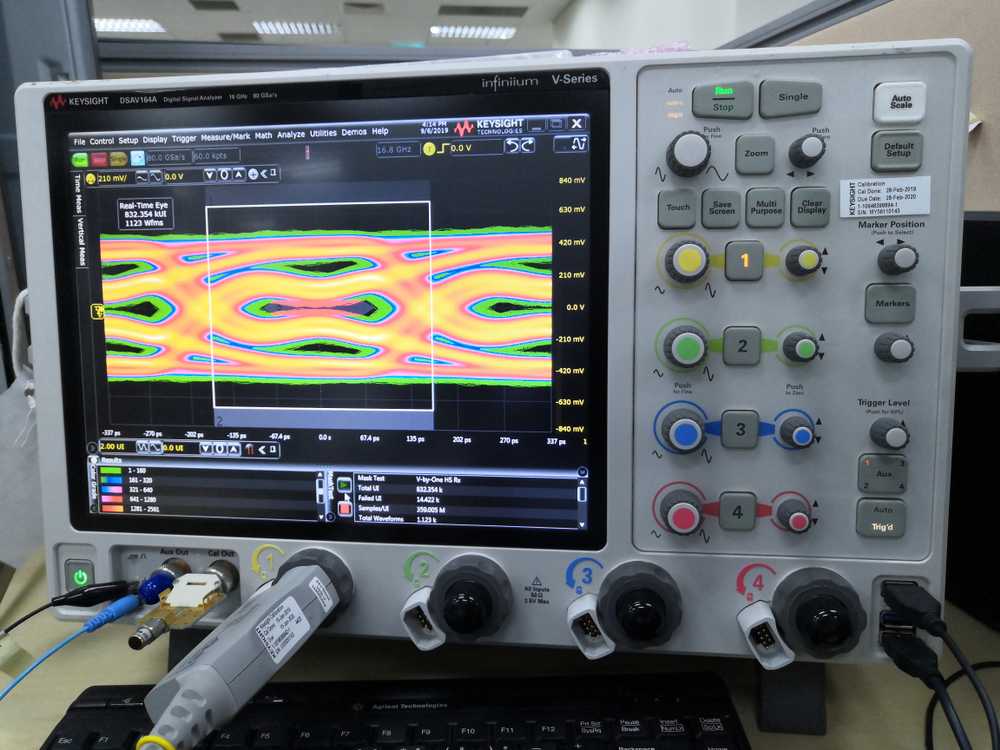Table of Contents
As TimesTech reports, the test and measurement market is ready to surge in demand, especially with the advent of ML-powered tools positioned to boost all areas of the industry. With a strong legacy of tools from companies like Keysight, however, many sector areas are still looking for existing solutions to help them test and measure equipment.
However, how do you know which to choose and which would be best in your field? It’s time to answer the question:
“Keysight Spectrum Analyzer: Which One is Best for You”
The best spectrum analyzer can transform your workflow, offering significant reliability and precision. This Keysight analyzer review will examine which options provide solutions for your specific needs.
The article will offer information to help with this decision, such as:
- When to use signal analyzers or spectrum analyzers
- Important considerations when choosing an analyzer
- Industry-specific requirements
- Detailed spectrum analyzer comparison
- Notes on Keysight vs. other analyzers
Read on to discover how to leverage Keysight’s offerings to ensure your products always perform at their best.
Understanding Signal and Spectrum Analyzers
If you know the answer to this question already, you can skip to the next section for key, which discusses key considerations when choosing an analyzer.
However, those looking into this guide without knowledge of the technology will need to know the difference between these tools.
Recognizing the Differences Between Signal Analyzers and Spectrum Analyzers
Signal analyzers measure many different qualitative details related to a signal. These may include:
- Amplitude
- Frequency
- Bandwidth
- Modulation analysis
- Signal-to-noise ratio (SNR)
- Phase measurement
This list is not exhaustive, and depending on the analyzer’s model, it might measure with more or less precision.
Conversely, spectrum analyzers are still a powerful tool but primarily display:
- Power level at different frequencies
- Frequencies detected
- Harmonics detected
- Spurious emissions
Both analyzers should also be able to sweep across a frequency range to visualize the detected spectrum, although that may depend on your specific chosen model.
Many of these functions are essential for several industries to ensure the quality of telecommunications, high-quality analysis, or component behavior. As such, understanding signal integrity and spectral purity is critical, and many different fields utilize both tool types.
When to Use Each Type in Different Applications
Signal analyzers are often used to analyze detailed digital modulation in telecommunications platforms. They can help pinpoint issues with individual signals or even problems related to mixed-signal systems. These features ensure high-quality transmission and reception and are often necessary to provide regulatory compliance.
Spectrum analyzers are better for more broad scans and when attempting to identify potential sources of interference. As such, they are often more helpful in diagnosing issues than making precision adjustments. Field workers benefit from using portable spectrum analyzers to help them perform on-the-go diagnostics and detect areas that need adjustments.
Key Considerations for Choosing a Spectrum Analyzer
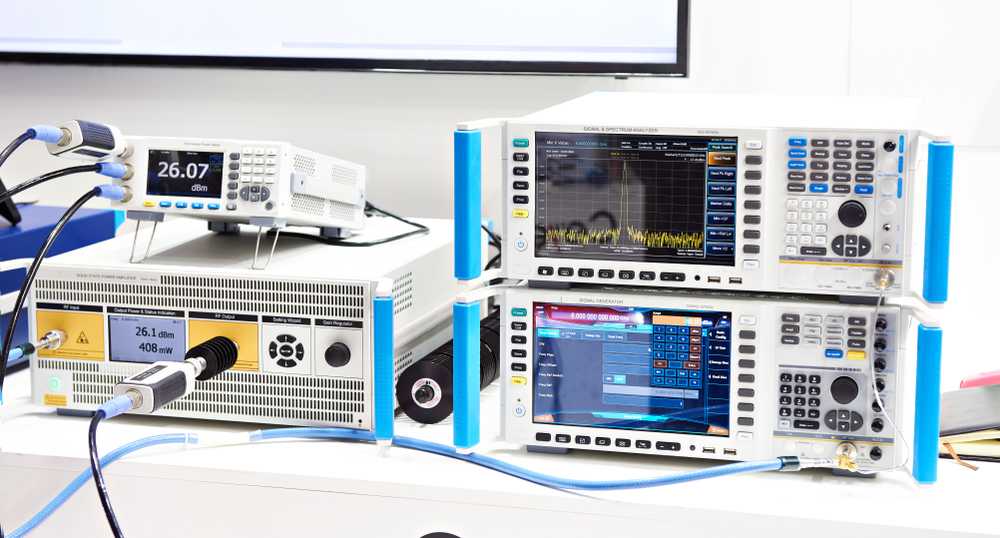
Having the right spectrum analyzer ensures that you can benefit from:
- Capturing the desired signal spectrum
- Having the right features for your specific field
- Budgeting appropriately for the level of technology you need
- Having a portable option for onsite diagnostics
Knowing which of the above you need to prioritize will help you choose an analyzer that will offer you all the data you need.
Frequency Range: Why It Matters
The frequency range of an analyzer denotes the range of frequencies that it can measure. Depending on the specific technology you work with, you may need to consider acquiring several different tool models.
The following two examples illustrate how different working fields might need to consider the frequency range on offer:
In the telecommunications industry, a wide frequency range is often important to accommodate the various bands different technologies utilize. These include:
- 2G
- 3G
- 4G
- 5G
- Wi-Fi
- Bluetooth
- Satellite communication
- Citizens Broadband Radio Service (CBRS)
- Public safety networks
- Internet-of-Things networks
The aerospace industry operates across a broad spectrum, each with specific requirements. Many of the frequency ranges they leverage relate to testing the performance of systems such as radar. A list of these bands includes:
- L-band
- S-band
- C-band
- X-band
- Ku-band
- K-band
- Ka-band
- V-band
- W-band
Aerospace radar systems operate across a broad spectrum, each with specific requirements.
These represent only a tiny percentage of the possible uses for spectrum analyzers, though they demonstrate how buying a restricted-spectrum tool may limit what you can detect. If you need to investigate bands outside of what your tool offers, you may end up with missed anomalies or undetected interference.
Analysis Bandwidth
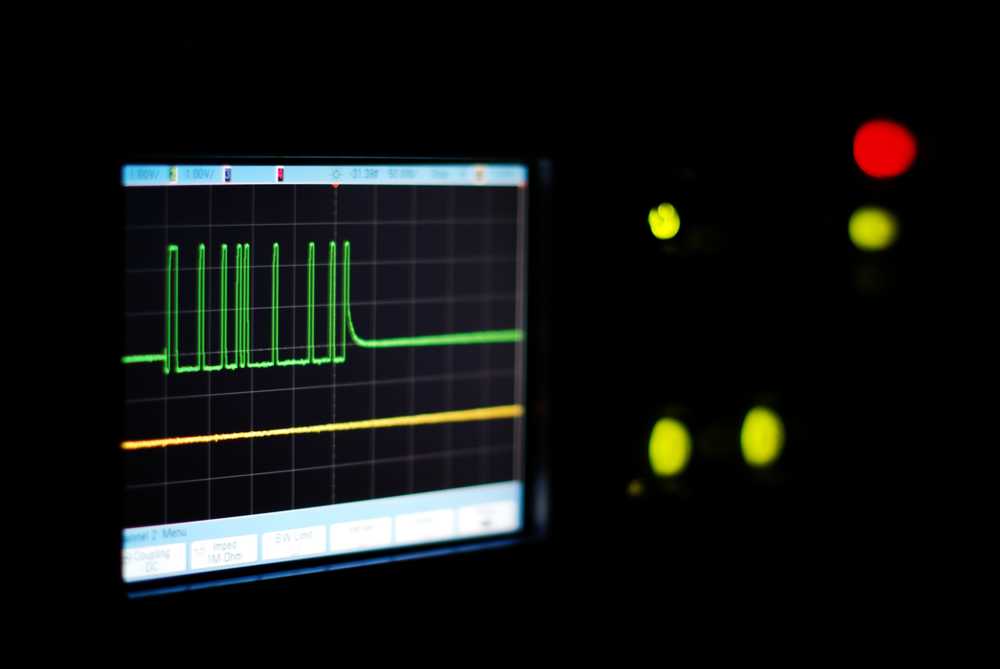
The bandwidth of a spectrum analyzer impacts the amount of information it can process at any time. More bandwidth allows you to perform more tasks and helps you detect more issues simultaneously.
Narrow bandwidths might be plenty for simple tasks, but they can limit the device’s utility in more complex environments with overlapping signals. In such situations, you will want to consider acquiring a device with a broader analysis bandwidth to ensure you can handle heavy analysis demand without data loss.
Noise Level and Dynamic Range
The noise level measures the amount of unwanted signal degradation caused by unwanted random interference the device generates internally.
Low noise levels are very important when you want to detect and analyze signals accurately, especially in environments prone to interference. As mentioned above, they can be critical in ensuring high accuracy in the telecommunication and aerospace fields.
Dynamic range is the device’s ability to accurately measure strong and weak signals, often simultaneously. Such features are essential for ensuring clarity when signals of varying strengths overlap, such as in communications systems. A wide dynamic range ensures the user can analyze signals accurately without one drowning out the other.
Device Portability
Portability may not be a technical feature but is often a deciding factor depending on the device’s purpose. If the work involving the tool involves in-field measurements, handheld devices offer a greater degree of flexibility.
You will need to balance this need for portability with functionality. While lab-based spectrum analyzers often have more features and precise measurement capabilities for in-depth analysis, handheld devices can perform onsite diagnostics and EMI troubleshooting.
Keysight Spectrum Analyzer: Which One is Best for You
Other considerations you may need to consider include the device’s accuracy, cost, and size. In some cases, you may need to match it to the constraints of the location you use it in.
Industry-Specific Requirements
As mentioned before, tools in industries such as aerospace and telecommunications will need to handle different frequency ranges to perform their daily roles.
In the defense field, however, a device’s dynamic range is critical in detecting multiple sources of signal interference during communication. Such features are imperative when attempting to ensure secure contact between two points.
In electronics, precision and versatility are paramount when performing tests on a wide range of components. The quality of EMI measurements, mixed-signal analysis capabilities, and noise levels all factor into the best choice of an electronics manufacturing and testing device.
Balancing Budget and Performance
Determine the device’s primary use to discover whether you need a higher-end model with better specs or a more utilitarian tool. If you need very precise measurements, for example, you may need to invest in a more valuable analyzer to ensure the accuracy of your results. Conversely, less expensive models may match your needs without breaking the bank.
Fortunately, Keysight provides a wide range of spectrum analyzer models from which you can make your choice.
Detailed Comparison of Keysight Spectrum Analyzer Models
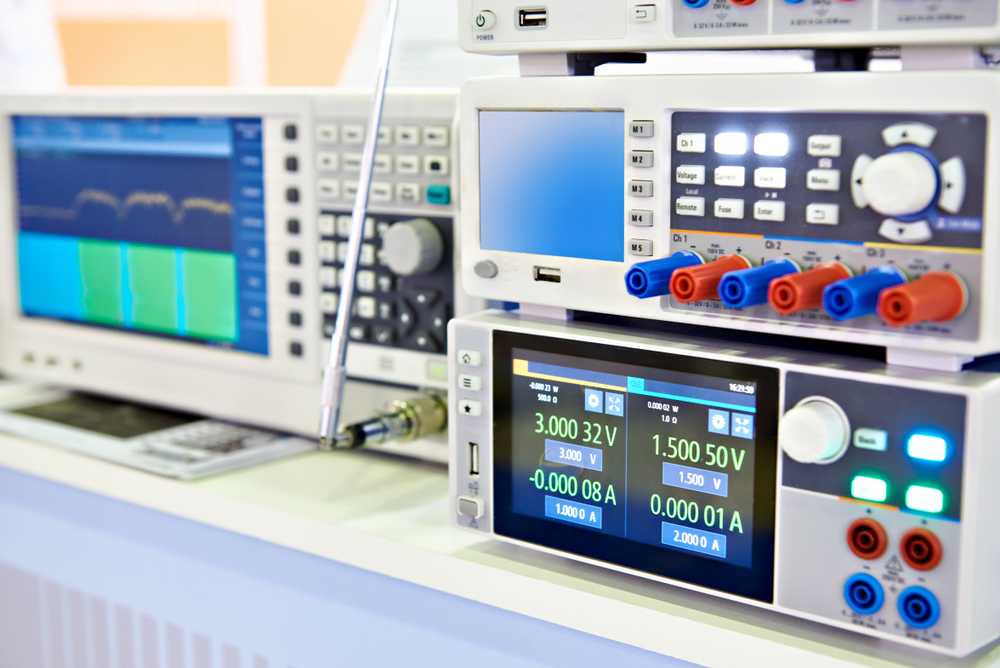
The following list of models should help you determine which is best for your needs. They will list:
- Key specs
- Features
- Potential applications
- Frequency range and other measurements
- Unique technical capabilities and features
- Pros and cons
Keysight N5182B MXG X-Series RF Vector Signal Generator
The N5182B device is common in telecommunications testing. It is notable for its ability to simulate real-world signals in different formats.
The device can support frequencies from 9 kHz to 3 Ghz, although some models can reach up to 6 MHz. It can also output up to 24 dBm in signal power, which makes penetration of obstacles much more straightforward.
The N5182B is perfect when accurate testing is needed. This ability makes it perfect for industries such as:
- Wireless communications
- Radar testing
- Radio R&D
As a benchtop device, the N5182B is not as convenient as other options and has a high price point, but it is a good choice when quality and reliability are a focus.
Keysight E8257D PSG Analog Signal Generator ($12,999.00)
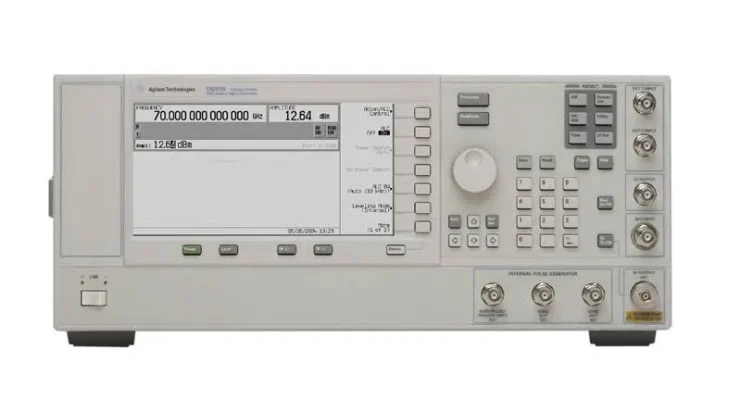
The E8257D is notable for its exceptional noise performance, among the best in the industry. Alongside a high power and frequency range, it is perfect for electronic warfare testing or any other field where precision errors can have significant repercussions.
The wide frequencies available from this device mean it will remain helpful in digital device development long into the future. Many emerging technologies, such as the Internet of Things or other connected tools, use a wide range of signals. So, you can leverage it if you need to pivot into these technologies later.
The E8257D’s high price tag means it is only a good choice in high-end R&D environments. Its size also makes it impractical for use in outside locations. As such, take these into account when making your decision.
Keysight N9020B MXA Signal Analyzer
One of the key pros of the N9020B is its modularity. It is easy to customize and upgrade, ensuring the device has a long functional life, a higher ROI, and a reduction in waste.
The device’s default frequency range is up to 50GHz, and its analysis bandwidth tops out at 160 MHz. Despite these capabilities, adding advanced features and options to ensure the best analysis may increase costs far past the initial investment. In that case, however, you may be better off buying a device more suited to your desired results.
Along with this ability to update the device’s functionality, its default state covers a wide range of frequencies and offers an excellent dynamic range. It is the perfect match if you are looking for more general-purpose analyses for testing or spectrum monitoring.
Keysight N9040B UXA Signal Analyzer
The N9040B has a frequency range of up to 110GHz but an analysis bandwidth of only 1GHz. With a strong dynamic range and a reputation for producing very little noise, it can make very precise measurements even in complex environments.
Such a wide frequency range also makes the N9040B perfect for cutting-edge research in signals such as 5G, 6G, and beyond. As this device is targeted at high-end labs, however, it is inaccessible for general use. It also demands a much higher level of expertise to operate with skill.
Keysight N9030B PXA Signal Analyzer ($15,789.00)
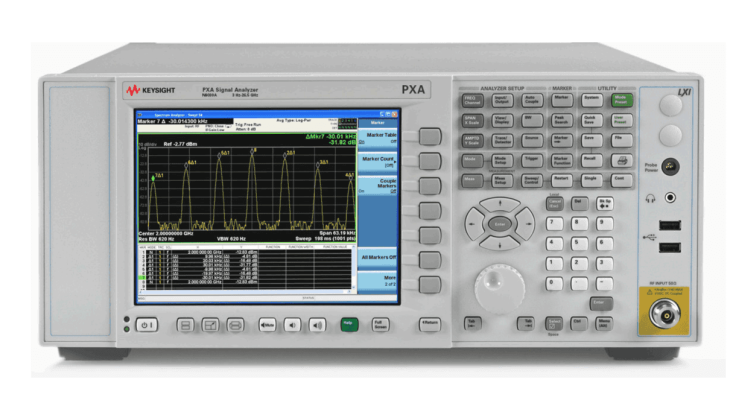
This signal analyzer is handy for tasks requiring accurate measurements and when in environments with multiple strong signals. As such, the N9030B is a good choice for areas such as:
- Wireless testing
- Aerospace signal analysis
- Component testing
As another scalable device, the N9030B can last much longer than many other devices. However, although it is more affordable than many other Keysight devices, it still sits on the expensive side. It may also need careful setup to ensure the added components are appropriate for its needs.
Keysight FieldFox Handheld Spectrum Analyzers
The FieldFox is among the most rugged spectrum analyzers, and the portable form factor allows it to easily see field use. As a multifunctional device, it also ensures that a user does not need to take several different pieces of equipment into the field.
Due to its onboard battery, Keysight’s portable offering is also perfect for situations when you may not have the assurance of electricity. The FieldFox is also unable to match the dynamic range or sensitivity of more comprehensive benchtop models.
Keysight’s FieldFox handheld spectrum analyzers are renowned for their portability, ruggedness, and comprehensive feature sets tailored for various RF measurement applications. When choosing a FieldFox model to buy, it’s important to match your needs with what each model can do.
Below is an overview of the most popular FieldFox models to help guide your decision:
1. Keysight N9918B FieldFox Spectrum Analyzer
Key Features:
- Frequency Range: 9 kHz to 3 GHz (upgradable to 6 GHz with options)
- Amplitude Range: -120 dBm to +35 dBm
- Display: 7-inch high-resolution touchscreen
- Portability: Lightweight and rugged design for field use
- Connectivity: USB, Ethernet, Wi-Fi, Bluetooth
- Advanced Analyzing: Built-in spectrum analyzer functions, signal generators, power meters, and more.
- Battery Life: Up to 12 hours of continuous operation
Ideal For: General-purpose spectrum analysis, signal monitoring, and troubleshooting in various industries including telecommunications, aerospace, and defense.
2. Keysight N9938A MXA Spectrum Analyzer
Key Features:
- Frequency Range: Up to 50 GHz
- Amplitude Range: -135 dBm to +35 dBm
- Dynamic Range: Excellent for low-level signal detection
- Advanced Capabilities: Real-time analyzing, wideband RF measuring, and vector signal analyzing.
- Connectivity: Extensive interface options for integration with other equipment
- Rugged Design: Built to withstand harsh field environments
Ideal For: High-performance applications requiring wide frequency coverage and superior dynamic range, such as RF research, wireless infrastructure, and complex signal environments.
3. Keysight N9939A MXA Spectrum Analyzer with Triaxial Connectors
Key Features:
- Frequency Range: Up to 40 GHz
- Specialized Connectors: Triaxial for improved measurement accuracy in high-frequency applications
- Advanced Measurement Functions: Including EVM (Error Vector Magnitude), bandwidth measuring, and more.
- Portability: Designed for ease of transport without compromising on performance
- User Interface: Intuitive touchscreen with customizable settings
Ideal For: Applications that require precise high-frequency measurements, such as satellite communications, radar systems, and advanced wireless technologies.
4. Keysight N9914B FieldFox
Key Features:
- Frequency Range: 9 kHz to 6 GHz
- Compact Design: Enhanced portability without sacrificing performance
- User-Friendly Interface: Simplified controls for quick setup and measurements
- Versatile Measurement Tools: Includes signal generation, power measurements, and more
- Battery Life: Optimized for extended field operations
Ideal for: technicians and engineers. They need a flexible and easy-to-use spectrum analyzer. This tool is suitable for regular field measurements and maintenance tasks.
Choosing the Right Model
When selecting the appropriate FieldFox model, consider the following factors:
- Frequency Range: Ensure the analyzer covers the frequency bands relevant to your applications.
- Dynamic Range and Sensitivity: Higher dynamic range is crucial for detecting low-level signals amidst high interference.
- Portability vs. Performance: Balance the need for mobility with the required measurement performance.
- Connectivity Options: Assess how the analyzer will integrate with your existing equipment and data management systems.
- Budget: Higher-end models offer advanced features but come at a premium price. Evaluate which features are essential for your work.
Find the Best Keysight Spectrum Analyzer for Your Specific Needs
Choosing the best spectrum analyzer is an important decision that can hinge on understanding your specific signal analysis needs. However, using the above information, you should be able to make a much more informed decision about which device to purchase.
If you want to ask the most important question about a Keysight spectrum analyzer: “Which One is Best for You?” check out Sonoran Surplus range at Sonoran Surplus. We offer expert advice on various analyzers that match your professional needs, so talk to us about how we can help you get the tools you need.

